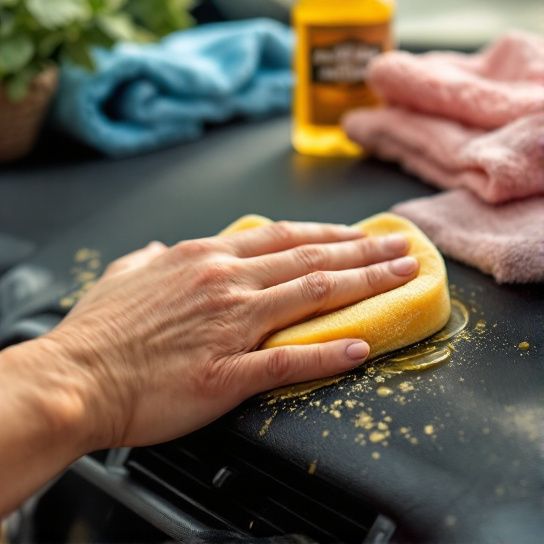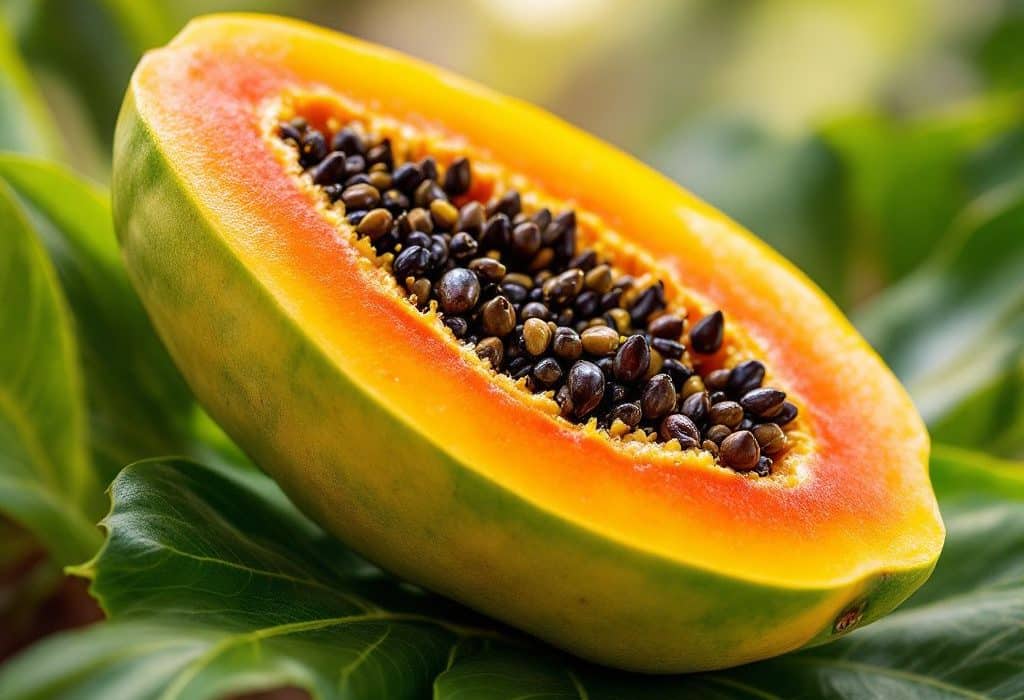Have you ever looked at a papaya and thought about how its seeds might hold the key to your natural beauty routine? Or perhaps you’re simply intrigued by the wave of new natural beauty products that are sourced straight from tropical paradises. Well, settle in because we’re diving into the lush world of papaya seed oil and how it’s carving its niche in skin and hair care. Trust me on this one—by the end, you’ll see why everyone’s buzzing about this tropical treasure.
The Curious Case of the Papaya
Let’s start with a mini pep talk about papayas. These vibrant, sweet, and sunshine-colored fruits are not just delicious—they’re basically nature’s come-hither whisper to glowing skin. Papayas have been revered for their health benefits for centuries, thanks to their incredible nutrient profile. They’re loaded with vitamins A, C, and E, and here’s where it gets juicy—those little seeds you’re usually too quick to discard? They’re a beauty goldmine in disguise.
What Makes Papaya Seed Oil a Beauty Elixir?
Papaya seed oil is extracted through a cold-press process from the tiny seeds of the Carica papaya fruit. This oil is like liquid sunshine, rich in omega-6 and omega-9 fatty acids, as well as papain, an enzyme known for its exfoliating properties. The antioxidant powers from vitamins A and C in this oil make it an impressive contender in the realm of natural beauty products.
Why should you care? Well, these components are a match made in heaven if you’re seeking to enhance skin elasticity, diminish blemishes, and maintain a well-moisturized complexion. Imagine a product that supports your skin’s natural glow while giving it a gentle tropical fragrance—not a bad deal, right?
The Alluring Benefits of Papaya Seed Oil
Let’s get into the nitty-gritty of why you might want a bottle of papaya seed oil on your beauty counter. This is not just another addition to your already crowded shelf (even though it may quickly find itself a prime spot). Here’s the lowdown:

Skin’s Best Buddy
- Natural Exfoliation Rockstar: With papaya seed oil, dead skin cells don’t stand a chance. The enzyme papain known for its natural exfoliating properties gently eliminates the dull layers, revealing refreshed and rejuvenated skin underneath—a simple step towards achieving your ultimate papaya skin glow.
- Hydration with a Tropical Twist: Thanks to the omega-rich formula, this oil penetrates deeply into the skin without leaving a greasy residue. It keeps your skin hydrated while maintaining moisture for longer periods. Perfect for dry patches and flaky skin saga!
- Brightening Agent: Papaya seed oil naturally contains brightening properties. Regular use can help even out skin tone and reduce the appearance of dark spots. Here’s an easy way to enhance your papaya skin brightness that you’ve been dreaming of.
Hair Health Hero
While it’s glorious on your skin, say hello to a healthy scalp and shiny hair. Papaya seed oil works wonders when massaged into your scalp. The hydrating properties ensure your scalp woes—from dryness to product buildup—are dispelled with consistent care. Plus, giving it a go could leave your hair looking lusciously tropical and vibrant.
How to Use Papaya Seed Oil in Your Routine
Feeling convinced yet? Before you dash off to get yourself a bottle, let’s talk about how exactly you can incorporate this powerhouse into your fabulous beauty routine.
Face Oil
- Everyday Moisturizer: Replace or blend it with your current moisturizer. Just a couple drops are enough to work through your skin in the morning or night. (Tip: It also blends beautifully with foundation for a dewy finish.)
- Spot Treatment: If your skin battles with stubborn spots, apply a small amount directly to the area. Over time, watch those blemishes lighten and bid them adieu.
Hair Care Bow

- Scalp Treatment: Gently massage a few drops directly into your scalp in sections. Let it sit for at least 30 minutes before thoroughly rinsing out. Not only will your roots be happy, but your strands will soak in the goodness too.
- Leave-In Conditioner: Use it sparingly on the tips of your hair for an impromptu deep-conditioning session, providing moisture without weighing down the hair.
Comparing Tropical Oils: Papaya Seed vs. The Others
Plenty of tropical oils try to steal the show—coconut oil, argan oil, you get the drift. Papaya seed oil, however, stands out for its light texture and multi-functionality. Unlike coconut oil, it leaves no greasy residue. While argan oil nourishes, papaya seed oil offers the added benefit of gentle exfoliation and brightening.
Here’s a snappy comparison table to lay it out:
| Oil Type | Texture | Key Benefit | Ideal Use |
|---|---|---|---|
| Papaya Seed | Lightweight | Exfoliating and brightening | Skin hydration and spot reduction |
| Coconut | Thick | Deep moisturizing and repair | Hair conditioning |
| Argan | Medium | Anti-aging and nourishing | Hair smoothening and skin softening |
Honestly, I am not saying dump every other oil and swear your life by papaya seed—each oil has its time and place. But papaya seed oil holds its ground with grace in the lineup of natural beauty products.

Some Handy Tips and Doses of Reality
Enjoy the Beaming Benefits, But Keep Expectations Realistic
Sure, papaya seed oil is amazing, but miracles won’t happen overnight. It’s about patience and consistent use. With well-paced attentiveness comes change that’s worth the effort.
Store It Right
A sad reality of natural oils: they deteriorate if left unprotected from heat and light. Store your papaya seed oil in a cool, dark place to retain its potency for up to a year.
Watch Out for Allergic Reactions
Natural doesn’t always mean suitable for everyone. Test a small amount on a patch of skin before you go all in to check for any allergic responses.
Rounding Up the Tropical Journey
As you toy with the idea of introducing papaya seed oil to your regimen, remember you’re celebrating a delightful fusion of nature’s bounty and modern beauty. It’s a go-to paradise in a bottle, close enough to hold in your hands, yet powerful enough to bring noticeable changes.
Consider whipping out a tropical map and pinpointing all the rare oils, but make sure papaya seed oil gets a place of honor. It might just be the tropical touch you didn’t know your beauty routine was missing. After all, sprawling under symphonies of palms and waves isn’t just a destination—it’s now in the comforting drips of papaya seed oil. Go on, give it a try, and bask in the glow of papaya-fueled natural beauty.
Frequently Asked Questions
What is the difference between “natural” and “organic” in natural beauty products?
Natural and organic are often used interchangeably but have distinct meanings. Natural beauty products are formulated with ingredients sourced from nature, rather than synthetic ones. Organic products, however, must meet specific organic farming standards, meaning the natural ingredients are grown without synthetic pesticides, fertilizers, or GMOs. While all organic products are natural, not all natural products are organic[5][1][3>.
Do natural beauty products contain any synthetic chemicals or harmful ingredients?
Despite claims of being “natural,” some products may still contain synthetic chemicals. The term “natural” is not strictly regulated, so it’s important to read the ingredient list carefully. Look for certifications from organizations like the USDA for organic ingredients and cruelty-free badges to ensure the product meets your standards. Be wary of long chemical names that sound synthetic, even if the product is labeled as natural[3][5][1>.
Are natural beauty products cruelty-free and sustainable?
Many natural beauty products are cruelty-free and sustainable. Brands like Harvest Natural Beauty are Leaping Bunny certified, ensuring their products are not tested on animals. These products are also made with eco-friendly, fair trade, and organic ingredients, and the companies often commit to sustainable business practices[1>.
Can natural beauty products cause allergies or skin reactions?
Yes, natural beauty products can cause allergies or skin reactions. Natural ingredients like essential oils and plant extracts can be potent allergens. It is important to patch test products before using them fully and consult the ingredient list for known irritants. Even though a product is natural, it does not automatically mean it is hypoallergenic[3][5>.
References

